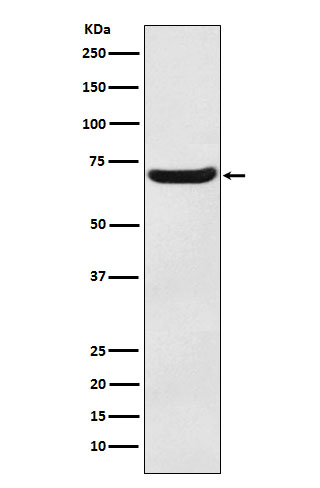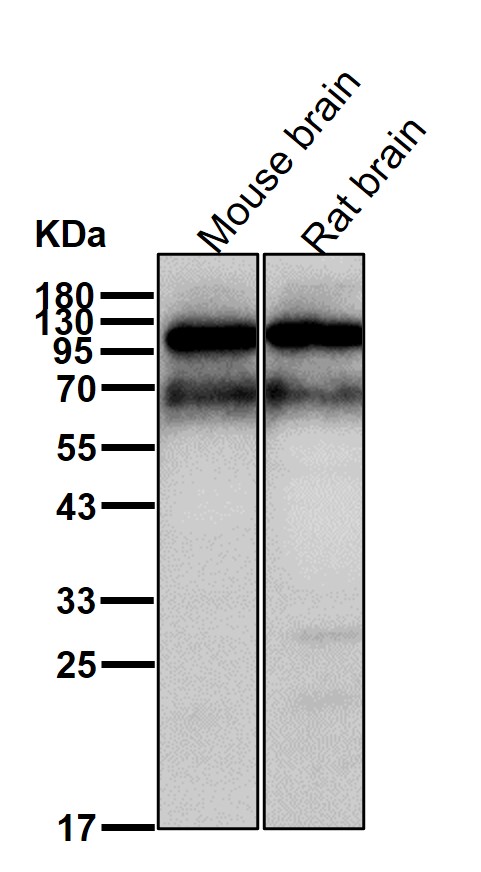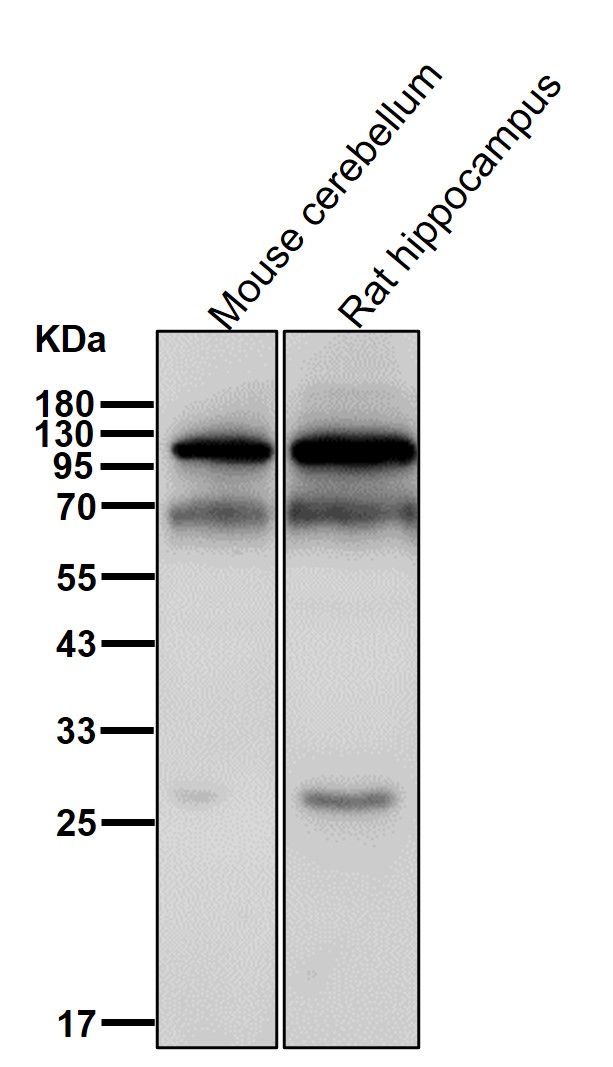


| WB | 1/1000-1/2000 | Human,Mouse,Rat |
| IF | 咨询技术 | Human,Mouse,Rat |
| IHC | IHC:1/100-1/200;IHF:1/50-1/200 | Human,Mouse,Rat |
| ICC | 1/50-1/200 | Human,Mouse,Rat |
| FCM | 咨询技术 | Human,Mouse,Rat |
| Elisa | 咨询技术 | Human,Mouse,Rat |
| Aliases | SLC1A1, EAAC1, EAAT3, Eaac-1;;EAAT3 |
| WB Predicted band size | Calculated MW: 57 kDa ; Observed MW: 70 kDa |
| Host/Isotype | Rabbit IgG |
| Antibody Type | Primary antibody |
| Storage | Store at 4°C short term. Aliquot and store at -20°C long term. Avoid freeze/thaw cycles. |
| Species Reactivity | Human,Mouse,Rat |
| Immunogen | A synthesized peptide derived from human EAAT3 |
| Formulation | Purified antibody in PBS with 0.05% sodium azide,0.05% BSA and 50% glycerol. |
+ +
以下是关于EAAT3抗体的3篇示例参考文献(仅供参考,具体文献需通过学术数据库查询):
---
1. **文献名称**:*"Selective loss of glial glutamate transporter EAAT3 in a mouse model of Huntington's disease"*
**作者**:Holmes et al.
**摘要**:研究通过免疫印迹和免疫组化技术,利用EAAT3特异性抗体发现亨廷顿病模型中纹状体区域EAAT3蛋白表达显著降低,提示其与疾病中谷氨酸代谢异常相关。
2. **文献名称**:*"EAAT3 antibody validation for neuronal subcellular localization studies"*
**作者**:Schmidt & Ribak
**摘要**:验证EAAT3抗体的特异性及适用性,通过敲除模型和免疫荧光共定位实验,证实该抗体可精确标记神经元胞体和树突中的EAAT3转运体。
3. **文献名称**:*"Role of EAAT3 in modulating oxidative stress in Parkinson's disease"*
**作者**:Berger et al.
**摘要**:使用EAAT3抗体检测黑质区蛋白表达,发现帕金森病模型中EAAT3下调加剧氧化损伤,提示其神经保护功能可能通过调节谷氨酸-抗氧化通路实现。
---
**备注**:以上为示例,实际文献需通过PubMed、Web of Science等平台以关键词“EAAT3 antibody”或“SLC1A1 antibody”检索。建议结合研究场景(如疾病模型、实验技术)筛选目标文献。
EAAT3 (Excitatory Amino Acid Transporter 3), also known as SLC1A1. is a sodium-dependent glutamate transporter primarily expressed in neurons, the kidneys, and the intestines. It plays a critical role in regulating extracellular glutamate levels in the central nervous system by transporting glutamate into cells, thereby terminating synaptic transmission and preventing neurotoxicity from excessive glutamate accumulation. EAAT3 also contributes to cysteine absorption in the intestines and reabsorption of glutamate in renal tubules.
EAAT3 antibodies are essential tools for studying the transporter's expression, localization, and function in health and disease. These antibodies are widely used in techniques like Western blotting, immunohistochemistry, and immunofluorescence to detect EAAT3 in tissue samples or cultured cells. Research has linked EAAT3 dysfunction to neurological disorders such as epilepsy, amyotrophic lateral sclerosis (ALS), and schizophrenia, as well as metabolic conditions like dicarboxylic aminoaciduria.
Commercially available EAAT3 antibodies are typically raised against specific epitopes of the human SLC1A1 protein and validated for cross-reactivity in model organisms like rodents (where EAAT3 is often called EAAC1). Proper validation, including knockout controls, is crucial due to potential cross-reactivity with other glutamate transporters. Studies using these antibodies have advanced our understanding of glutamate homeostasis, synaptic plasticity, and therapeutic targets for neurodegenerative diseases.
×